- Guided Tours
- Self Guide Smartphone Tour
-
Revere Bells Index
- The Stickney Revere Bell Listings of 1976
- Ashby Mass. Revere Bell
- Paul Revere Bell of Beverly
- Revere Bells in Boston >
- California's 2 Paul Revere Bells
- Paul Revere & Son's Bell Westborough Massachusetts
- Falmouth, Massachusetts
- Revere Bell Fredericksburg VA
- Revere Bell Hampton NH
- First Parish Church of Kennebunk
- Revere Bells in Maine
- Revere Bell in Mansfield
- Revere Bell of Michigan
- Revere Salem Mass Bell
- Roxbury First Unitariarn Universalist Church and their Revere Bell
- Revere & Son Bell, Savannah Georgia
- Singapore Revere Bell
- Tuscaloosa Bell >
- Revere Bells Lost in Time
- Revere Bells Washington DC
- Revere Bell in Wakefield, Mass
- Revere Bells Woodstock VT
-
Bostonians
- Edward F Alexander of The Harvard 20th Civil War Regiment
- Polly Baker
- John Wilkes Booth
- The Mad Hatter, Thomas, Boston Corbett who Killed John Wilkes Booth
- Richard-Henry-Dana-Jr
- James Franklin
- Benjamin Harris of Publick Occurrences
- Oliver Wendell Holmes, Jr.
- William Lloyd Garrison
- USS Thomas Hudner DDG116
- Edward Hutchinson Robbins Revere
- Amos Lincoln
- King Philip
- Mayor's of Boston
- Mum Bett & Theodore Sedgwick
- James Otis
- Paul Joseph Revere
- Reverend Larkin's Horse
- John Rowe >
- Be Proud to be Called a Lucy Stoner
- Rachel Wall , Pirate
- Paul Revere the Coroner of Boston
- Deborah Sampson
- Who was Mrs. Silence Dogood?
- Dr. Joseph Warren's Dedication
- History Blog
- Lilja's of Natick
-
Collage of Boston
- 4th of July Parade, Bristol RI
- Boston Harbor
- The Customs House
- Forest Hills Cemetery
- Georges Island
- Nonviolent Monument to Peace - Sherborn
- The Battle Road
- Skate bike and scooter park
- Cassin Young & USS Cassin Young
- MIT
- Historic Charles River
- The Roxbury Standpipe on Fort Hill
- John & Abigail Adams National Park
- Boston's Racial History - Ante-Bellum
- New Page
|
Why did Paul Revere Become a Coroner at the Age of Sixty-two? He Found Murder, Suicide, Infanticide and many Cases of Drowning John Winthrop, in 1630, obtained the Massachusetts Bay Charter from King Charles of England. He and the nine-hundred Puritans that followed used the charter to divorce from a religion that seemed to have lost its Christian principles. The Charter granted the Puritans the land area known as Massachusetts, after the original Indian tribe, and the distance over an ocean provided the freedom to practice their religion. Not to be left on shore, British Common Law sailed on John Winthrop's eleven ships. The Puritans brought with them the English legal system that became the foundation for today's common law. Consequently the concept of coroner arrived in America on the Arabella, Winthrop's command ship. The function of coroner came from a derivative of the word “crown” and was originally spelled “coroune.” A coroner initially supervised the English court system to financially protect the Crown. Between the 13th and 14th Century crime was rampant in England. Famine, migration, consolidation of wealth and power attributed to the rise in violence. To this point in time, the coroner conducted investigations into fraud, taxes, and facts that would support litigation. To meet the escalating volumes of violent events the coroner's function adapted to address unexpected deaths. From the 14th Century to Colonial Boston, the coroner immediately convened an inquest jury (usually thirteen men) to pre-judge the facts leading to a sudden or suspicious death. A secondary role for the coroner was to inquire and confirm the identity of an abandoned body. By Paul Revere’s birth, on or around January 1, 1735, Boston was transitioning from the Julian to Gregorian calendar. Consequently, ten days may have been lost to his history. Regardless, the function of a coroner had fully matured by then. Sixty-two years later Paul Revere would apply for the role of coroner. His first inquest was February 21, 1796. By the way, the average life expectancy of men was fifty-six years in Colonial Boston. If he had retired in 1796, Paul would have left his sons one of America’s most innovative foundries to create gunpowder, cannon, church bells and copper plating for naval vessels. Financially, he was on a good footing with his sons running the Foundry in Canton known as the Revere Copper Company[i]. He had already produced hundreds of church and ships bells, with his largest and best to come in the future. See our collage of an image of the 2400 pound bell at Kings Chapel, Tremont St., Boston. The United States government reluctantly, then exclusively, ordered copper plating for its warships including the U.S.S. Constitution, “Old Ironsides.” With this in mind, we set off to learn his motivation to become a coroner. In our pursuit, we stumbled on three themes in the forty-six inquests completed by Paul Revere. We shall reveal them later in our writing. Below is our frame of reference based on the bibliographies listed below and the common themes among them.
There were nineteen doctors in Boston treating sixteen-thousand citizens. It appears that any one of them sought the opportunity to conduct a post-mortem. Holding an inquest, arranging for a jury and making a judgment on the accused was left to others. And so the opportunity was available for Paul. He served for nearly four years. The results of the forty-six inquests in Paul’s handwriting are available from the Massachusetts Historical Society microfilm library. A sample is embedded below. His notes described the sudden cause of death, the jurors seated, their judgment and if they were paid for their services. There were three themes among the forty-six sudden deaths based on the juries decisions. Drowning was a major problem. Our blog on swimming may provide background information that may bewilder you, as Boston was such a nautical society. Secondly, suicide and murder, generally by opium, was common in this religious community. In its liquid form of Laudanum, opium was readily available to treat or permanently eliminate physical or mental pain. Imaged below is a PDF file attempting to detail all of Paul Revere’s inquests. Though he was the best of artisans, we had difficulty reading all of the names. If anyone gets close to this, please help us with the victim's full identity. Thirdly, in this Puritan community in a moral state of change, infanticide was a major issue. Society no longer saw the man as the innocent party in a birth outside of marriage. We will expand on all three themes mentioned above in a separate blog coming soon. You can sign up for our mailing list to receive notices of additional postings. Paul Revere graciously resigned from the coroner's position suggesting he did not have the time to properly do the task. Page two of the matrix below may confirm just this as basic detail is missing. Time must have caught up with him, though he did not officially retire from his foundry business for another twelve years. Our blog on the infanticide trials resulting from Paul Revere's inquests, has been published. You can click here to read on. Click for our full compliment of tours. [i] The Revere Copper Company now resides in Troy New York but has not forgotten its heritage. Worker_at_Rolling_Mill.jpg (398 × 250 pixels, file size: 25 KB, MIME type: image/jpeg) Wikipedia Free Use [ii] Forbes, Esther. Paul Revere & the World He Lived in. Vol. 1. Boston: Houghton Mifflin, 1942. Print and online p. 77. {ii}Triber, Jayne E. A true republican: the life of Paul Revere. Amherst: U of Massachusetts Press, 2001. Print. p. 263. Bibliography Forbes, Esther. Paul Revere & the World He Lived in. Vol. 1. Boston: Houghton Mifflin, 1942. Print. Fischer, David Hackett, Paul Revere’s ride. Norwalk, CT. Easton Press 1996. Print. Han, Shin-Kap. "THE OTHER RIDE OF PAUL REVERE: THE BROKERAGE ROLE IN THE MAKING OF THE AMERICAN REVOLUTION*." © 2009 Mobilization: An International Quarterly 14(2): 143-162 14.2 (2009): 143-62. Print. Healy, Kieran. "Using Metadata to Find Paul Revere: Kieranhealy.org." Using Metadata to Find Paul Revere. Blog, 9 June 2013. Web. 18 Aug. 2015. "H-Net Reviews." H-Net Reviews. If There Is Additional Discussion of This Review, You May Access It through the List Discussion Logs At: Http://h-net.msu.edu/cgi-bin/logbrowse.pl. Citation: Allan Branstiter. Review of Martello, Robert, Midnight Ride, Industrial Dawn: Paul Revere and Th, 1 Sept. 2012. Web. 17 Nov. 2015. Martello, Robert. Midnight ride, industrial dawn: Paul Revere and the growth of American enterprise. Baltimore: Md., 2010. Print. Massachusetts Historical Society, Microfilm rolls, Massachusetts State Archives, vole 14.Suffolk Collection, Microfilm volume 692, 693 and 702, cases 107545 and 107566 and 108204 cases, Skillmore, Wellman and Jefre & Hannah Porter. Acknowledgement to Elizabeth Bouvier of the Massachusetts Superior Court for her assistance finding the actual court records involving the deaths by infanticide.
1 Comment
|
Categories
All
Archives
February 2020
|
- Guided Tours
- Self Guide Smartphone Tour
-
Revere Bells Index
- The Stickney Revere Bell Listings of 1976
- Ashby Mass. Revere Bell
- Paul Revere Bell of Beverly
- Revere Bells in Boston >
- California's 2 Paul Revere Bells
- Paul Revere & Son's Bell Westborough Massachusetts
- Falmouth, Massachusetts
- Revere Bell Fredericksburg VA
- Revere Bell Hampton NH
- First Parish Church of Kennebunk
- Revere Bells in Maine
- Revere Bell in Mansfield
- Revere Bell of Michigan
- Revere Salem Mass Bell
- Roxbury First Unitariarn Universalist Church and their Revere Bell
- Revere & Son Bell, Savannah Georgia
- Singapore Revere Bell
- Tuscaloosa Bell >
- Revere Bells Lost in Time
- Revere Bells Washington DC
- Revere Bell in Wakefield, Mass
- Revere Bells Woodstock VT
-
Bostonians
- Edward F Alexander of The Harvard 20th Civil War Regiment
- Polly Baker
- John Wilkes Booth
- The Mad Hatter, Thomas, Boston Corbett who Killed John Wilkes Booth
- Richard-Henry-Dana-Jr
- James Franklin
- Benjamin Harris of Publick Occurrences
- Oliver Wendell Holmes, Jr.
- William Lloyd Garrison
- USS Thomas Hudner DDG116
- Edward Hutchinson Robbins Revere
- Amos Lincoln
- King Philip
- Mayor's of Boston
- Mum Bett & Theodore Sedgwick
- James Otis
- Paul Joseph Revere
- Reverend Larkin's Horse
- John Rowe >
- Be Proud to be Called a Lucy Stoner
- Rachel Wall , Pirate
- Paul Revere the Coroner of Boston
- Deborah Sampson
- Who was Mrs. Silence Dogood?
- Dr. Joseph Warren's Dedication
- History Blog
- Lilja's of Natick
-
Collage of Boston
- 4th of July Parade, Bristol RI
- Boston Harbor
- The Customs House
- Forest Hills Cemetery
- Georges Island
- Nonviolent Monument to Peace - Sherborn
- The Battle Road
- Skate bike and scooter park
- Cassin Young & USS Cassin Young
- MIT
- Historic Charles River
- The Roxbury Standpipe on Fort Hill
- John & Abigail Adams National Park
- Boston's Racial History - Ante-Bellum
- New Page

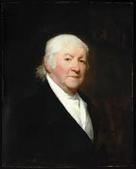
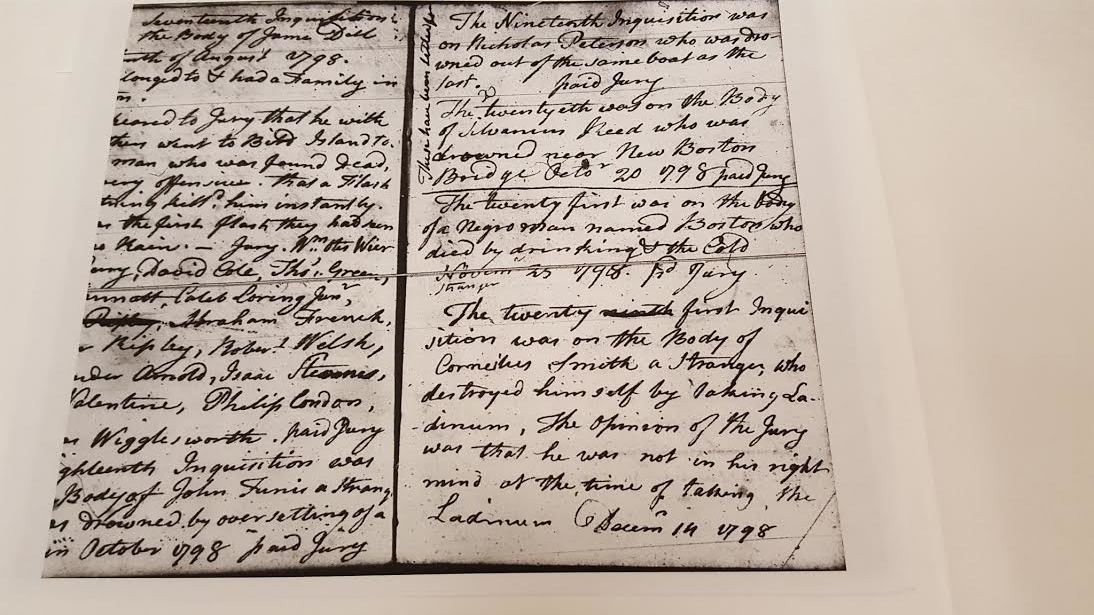
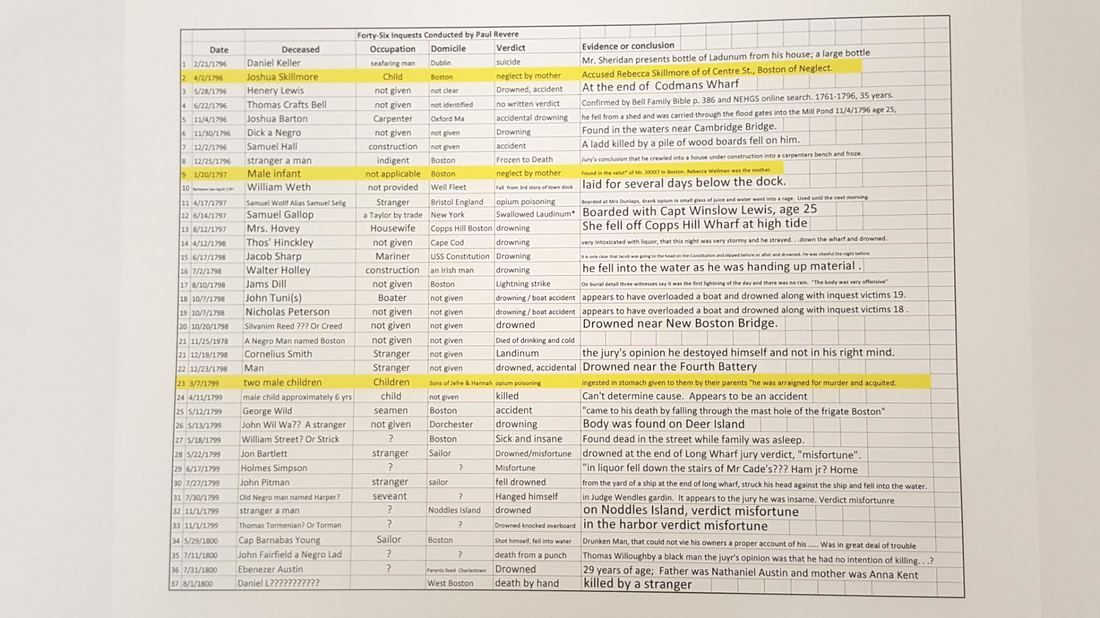
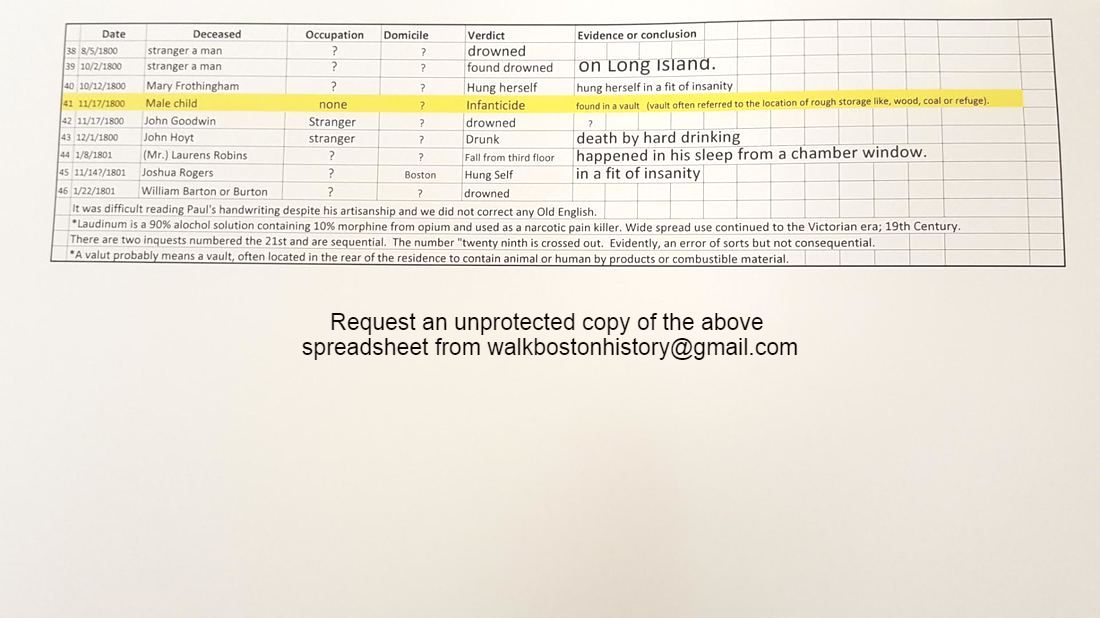

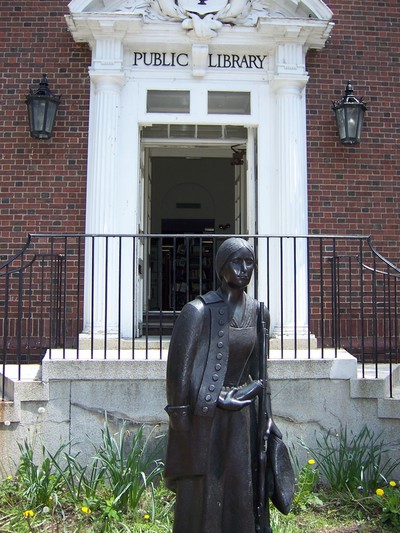
 RSS Feed
RSS Feed